In Martinique, everyone will find something for himself. Some might prefer to spend whole days on the beach, some might be looking for adventure with jungle trekking in looking for waterfalls or wandering in savannah landscape. But for those who would like to learn a bit more about the island’s history, I recommend them to visit La Savane des Esclaves.
If you’re one of them, let me bring you to a place full of stories and knowledge. Enjoy this visit and remember to appreciate your own quality of life. Or maybe we should actually change something in it?

La Savane des Esclaves – why it is so unique?
La Savane des Esclaves in Martinique is, in the simplest term, the open-air museum. It is the area of 2,5 acres, where you can find the reconstruction of the everyday life of people living on the island years ago. Mainly, it tells the story of slaves which came to island, forced by colonizers. Visiting this place is one of the best things to do in Martinique.
The area of La Savane des Esclaves consists of gardens and small huts. The founder of this place, Gilbert Larose, built them the same way they were built originally by slaves. Each hut tells another story and, gathered together, they show the complete picture of the slavery issue. Unlike the huge and modern Mémorial ACTe in Guadeloupe, here we receive the opportunity to imagine how the everyday miserable life looked like during slavish centuries.
And even if the knowledge gained in this place is frightening in fact, in the end, I felt really great wandering on the simple paths and through the simple life. Maybe that’s the lesson we all should learn? Simplifying our lives and appreciating more what we have? Think about it while reading this text.
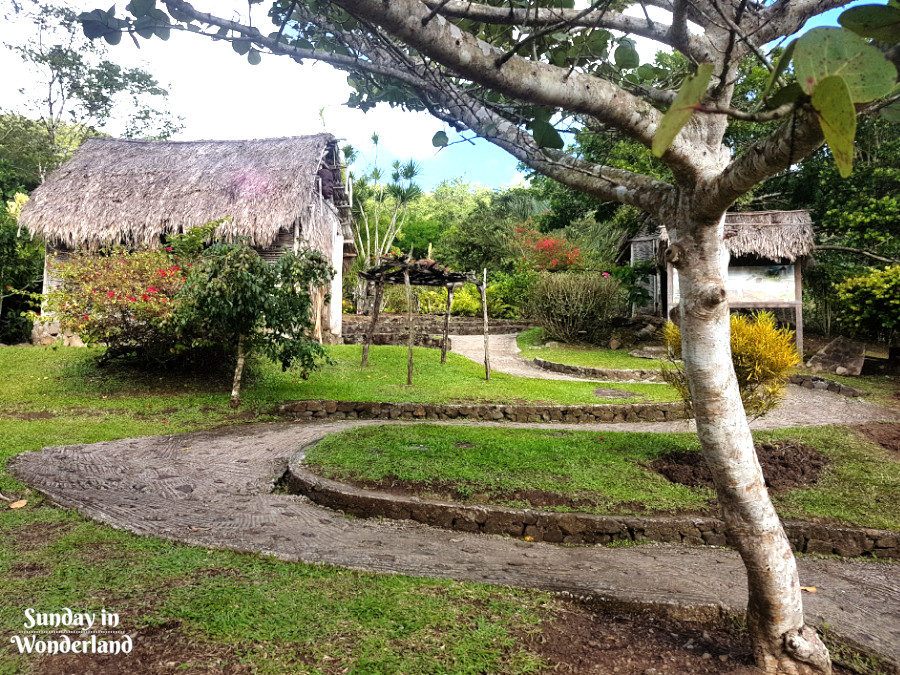
A bit of history
While walking the paths of La Savane des Esclaves, we will be able to learn a bit of the island’s history. The colorful boards will show us each aspect of the life of people living there. Unfortunately, most of those stories will not be glorious.
Christopher Columbus discovered Martinique for the Western world in 1502, but he didn’t stay on the island. It was 1635, when the first French settled on the island, after creating an agreement with the local people – the Caribs. Since then, Europeans started to create plantations of tobacco, cotton and sugar cane, and the colonial times began.
Look down and work hard
The colonists needed hands to work. So in France, the famous Cardinal Richelieu began to incentive people to sail to the Caribbean and become “volunteers”. He promised them to be receiving half of the produced goods in return for working in plantations. Many men, mostly from Normandy and Brittany, tempted for his proposals and came to the Antilles. But the reality was not so colorful in fact.
When “the volunteers” came to the Caribbean islands, the planters treated them like slaves. They were working much harder than they should, in poor conditions. And before they actually received an opportunity to earn something, they needed to work for 36 months to pay they journey from Europe to Martinique.
Dark times for humanity
In 1638, the first slaves from Africa were brought to Martinique. Unlike “the volunteers”, they were treated only like plantation’s tools from the very beginning. They were transported mostly from the African continent to European cities, like Nantes, Le Havre or Bordeaux, kept in cages, and then shipped to the Caribbean and sold to the planters to hard labor.
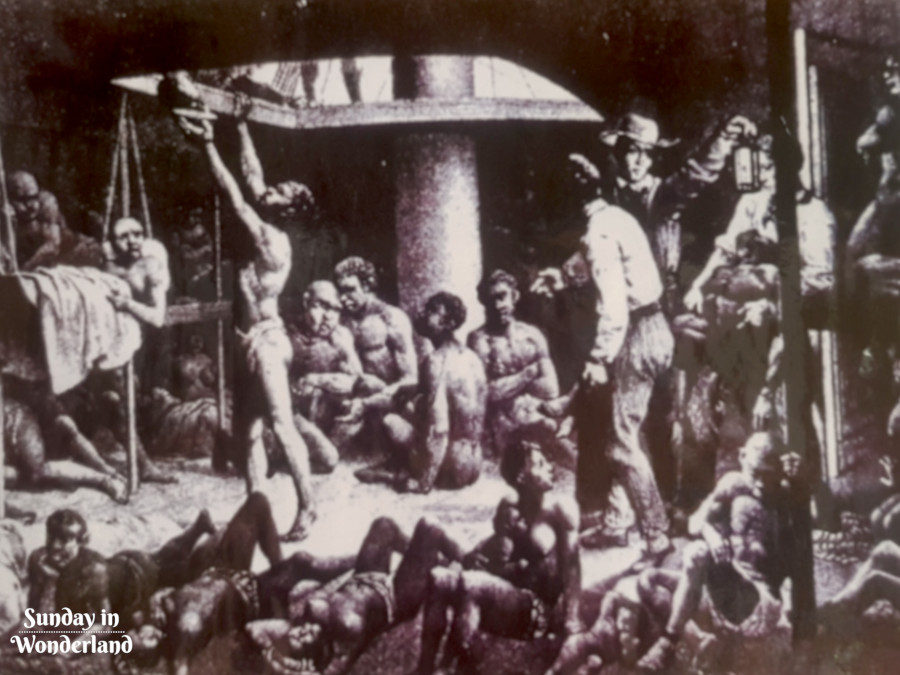
Everyday life of a slave was hard work. Each day, they were working physically in the full Caribbean sun often over a dozen hours. The base of their diet was manioc, from time to time varied with salted meat – beef head, turtle or fish. With the centuries, potatoes, corn, peas, and bananas replaced manioc. This miserable diet, hard work over strength, and the lack of medical care was the reason why the average length of life among the slaves was 25-35 years old.
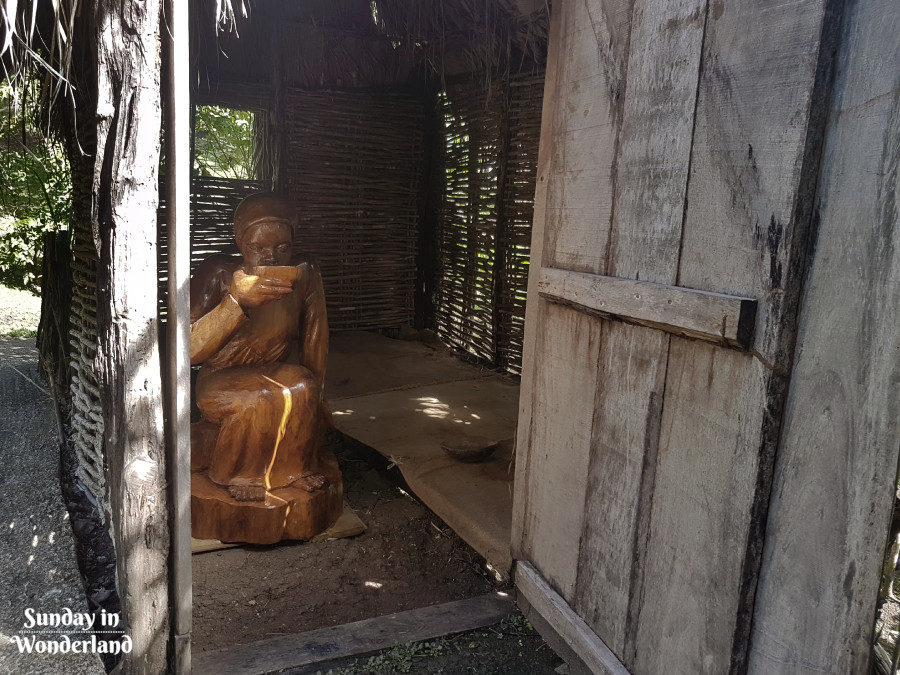
The Black Code
Since the slave trade became extremely popular in the overseas territories, some laws and regulations were created to control the whole system. In 1685, Colbert, a French minister, wrote The Black Code, which was a set of regulations concerning the slaves’ treatment.
The Black Code has the answer to every question that the planter might ask. For example, when a slave tried to escape from the plantation for the first time but he was caught, his owner had a right to cut his both ears and brand his cruelly with a lily symbol (fleur-de-lys) on his shoulder. After the second try of escape, the slave was branded on the second shoulder and his leg was cut off at the knee. For the third try, he was sentenced to death.
When a slave was caught while eating a sugar cane on the field, he was forced to wear a muzzle during the work.
With getting old, the slave gained the “right of savannah”. That meant he was able to choose to live on his own, somewhere near the plantation. He could still be doing some small tasks, like being a doorman or hunting the pests.
The slaves were not allowed to use any kind of plants that were considered as medicinal. And that was because the plantations’ owners were afraid of being poisoned.
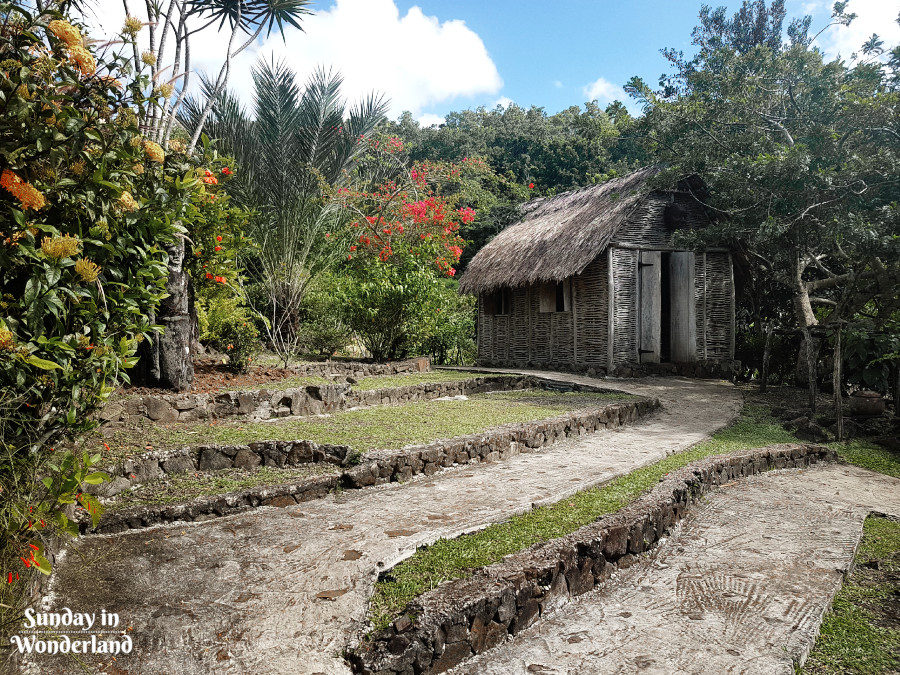
The Abolition of Slavery
The decree of the Abolition of Slavery was signed in 1794, but it only slightly limited the slaves’ trade. Slavery became officially illegal in 1848 and these regulations included all French territories. But the illegal trade still existed until the end of XIX centuries, because the planters still needed hands to work.
In the Caribbean, when the slaves regained “freedom”, their situation, in fact, didn’t change that much. Usually, they were able to continue the work on the plantation in return for the place to sleep and some food. So in fact, the conditions stayed the same. But some of the people chose to live on their own in the lands which the planters were not using. There, they tried to live their lives in self-built villages, until the XX century.
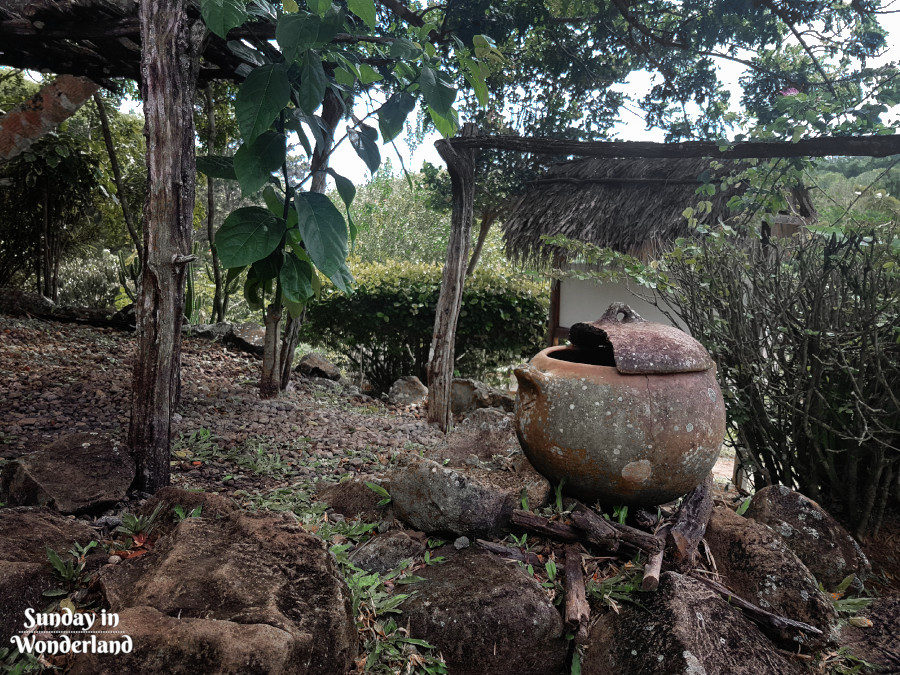
The richness of gardens of Savane des Esclaves
But now, let’s get off those sorrowful times. Luckily, La Savane des Esclaves is not only the lesson of history. In this place, you can also enjoy the charm of multiple gardens.
Plenty species of trees, plants, and flowers will greet you in gardens of La Savane des Esclave. Since this place is meant to be an educational entertainment, you will find multiple informative boards on the path. You will learn which kind of medicinal plants grow in Martinique and how people were using them to treat diseases. You will read the stories about the plantations of tobacco, coffee, cotton, cocoa, and more. And finally, you will see what kind of vegetables and fruits can be found on the island and how to use them in a creative way in your kitchen.
You can even participate in a cocoa workshop, where you will have an opportunity to learn more about this miracle plant and its fruits! And if you would like to prepare yourself a cup of a delicious Caribbean hot chocolate, check out the list of food, sweets, and drinks which you should try in the French Antilles.
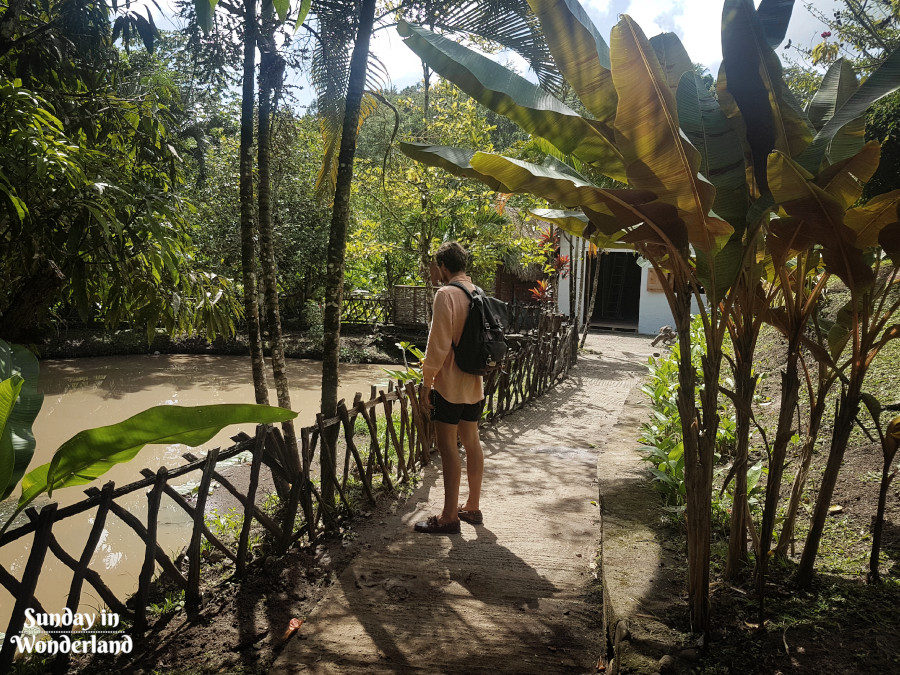
The ancient storytellers
The other great section of a parc, that I loved, was The Amerindian Village. There, we have the opportunity to sneak peek how the life of the very first people living in the Caribbean looked like. And it was very interesting from my point of view.
The Kalinagos, or Caribs, were living in the islands centuries ago. Before, another group was settling those lands – Arawaks. Both those nations were living on the Caribbean coasts until their world was turned upside down with the European settlers in the XVI and XVII centuries.
La Savane des Esclaves teaches us many interesting facts about the everyday life of those Indigenous people. Like the diet for instance: those people usually feed themselves by caught fish, but also birds, iguanas, and crabs. They were also cultivating plants in their gardens near villages. The most common were manioc, yam, sweet potato, cabbage, corn, sugar cane, banana, pineapple, melon, and others.
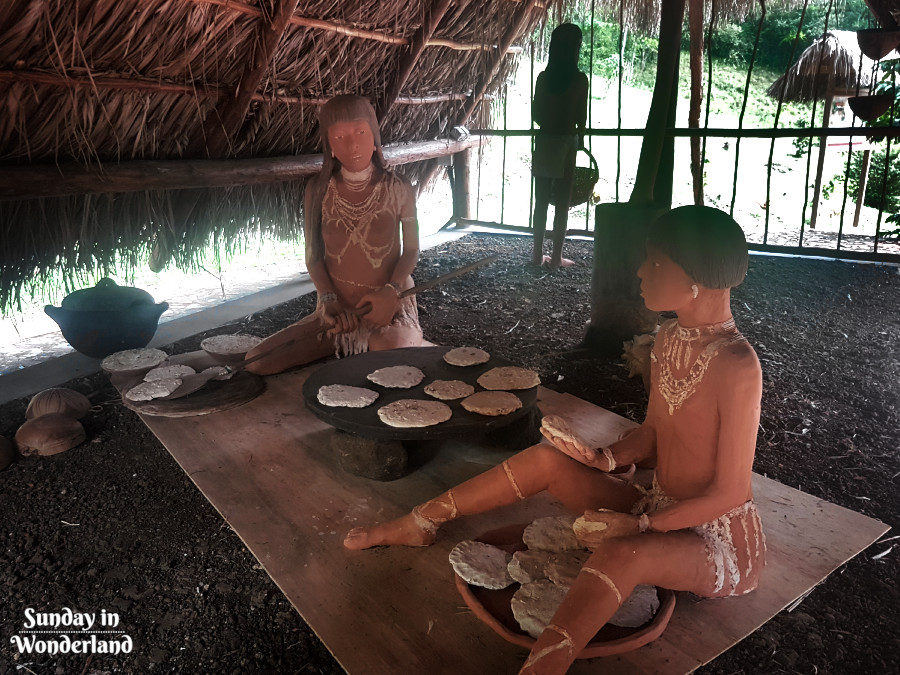
The fullness of life
Carib people had also some peculiar marriage traditions. When a boy reached the age of 15 or 16 years old, he could get married. But before doing so, he must fulfill few conditions: he should be master in shooting a bow, know how to fish and make useful baskets, built a house and posses a garden ready to cultivate. Only then he could take a wife. But for the first year, it was only a trial marriage. If, after this one year, the woman did not get pregnant, then her husband could send her away and marry another one.
While men were usually hunting, women were cultivating plants in gardens and keeping care of the village. They were also creating household items. One of the most essential was a hammock. For a woman, it took one year to create the complete hammock from the natural cotton. Quite a lot of time, but the village’s inhabitants were using those hammocks as seats and beds.
Caribs were in fact very entertainment. They were finding plenty of occasions to make huge, few-days-long celebrations in villages with a common feast, music, and dances. They were also playing sports. The most popular probably was a ball game. Two teams were passing on a ball which was of rubber and cotton. But the tricks was that it cannot be touched with an arm or a leg. So kind of harder football.
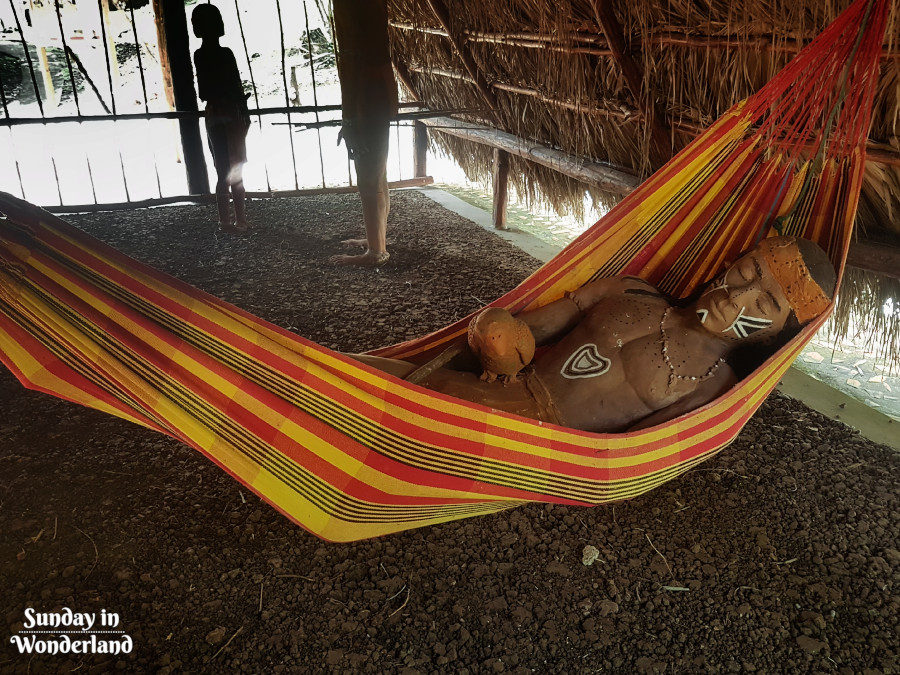
La Savane des Esclaves – practical tips:
- How to get to La Savane des Esclaves? The place lies in the region of Les Trois-Îlets in Martinique. The easiest way to reach it is to rent a car, but you can also take a bus to the city center or and take a walk or try the hitchhiking.
- Is this place friendly for everyone? Absolutely! Children, seniors, people on wheelchairs and baby strollers will not have any problems with moving around in the park.
- What if I do not speak French? The owners perfectly prepared the place also for English speakers. All of the informative boards are fully translated into English.
- Any other features? La Savane des Esclaves offers also guided tours (only in French), which is a great addition to the boards. It also organizes multiple workshops and shows. You can find more information on their official website. They also have a small shop with locally made items and sweets where you can purchase some souvenirs.
- What’s the price of this adventure? While writing this article, the prices were: 12€/adult, 8€/student, and 5€/child. La Savane des Esclaves is open every day!
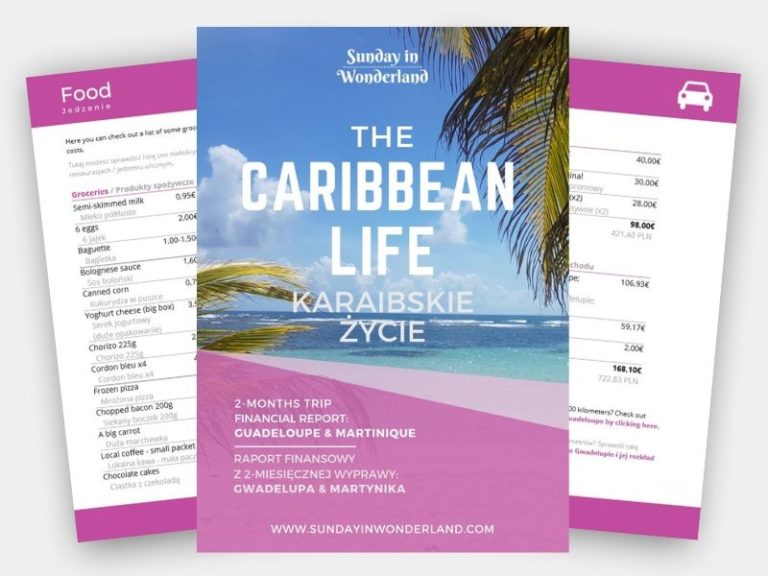
Wanna know the complete
costs of traveling to
the Caribbean?
Grab my free financial report!
Thank you!
Now check your inbox and confirm your email. Remember to check out the SPAM folder as well.
While living the whole month in Martinique, I appreciated visiting La Savane des Esclaves. I recommend it to everyone who travels to this French department since this trip will broaden your knowledge about the island and its history. Moreover, it is a great way to spend a day surrounded by nature and simple life, which will surely bring your mind some peace.
Like it? Pin it!
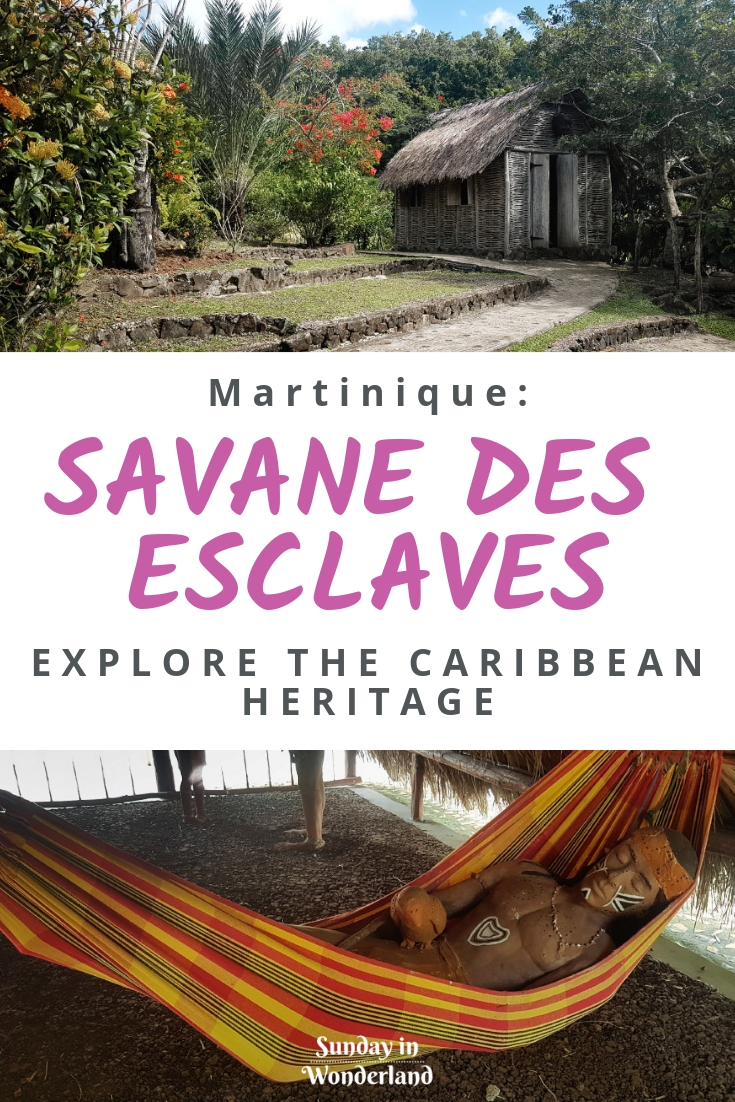
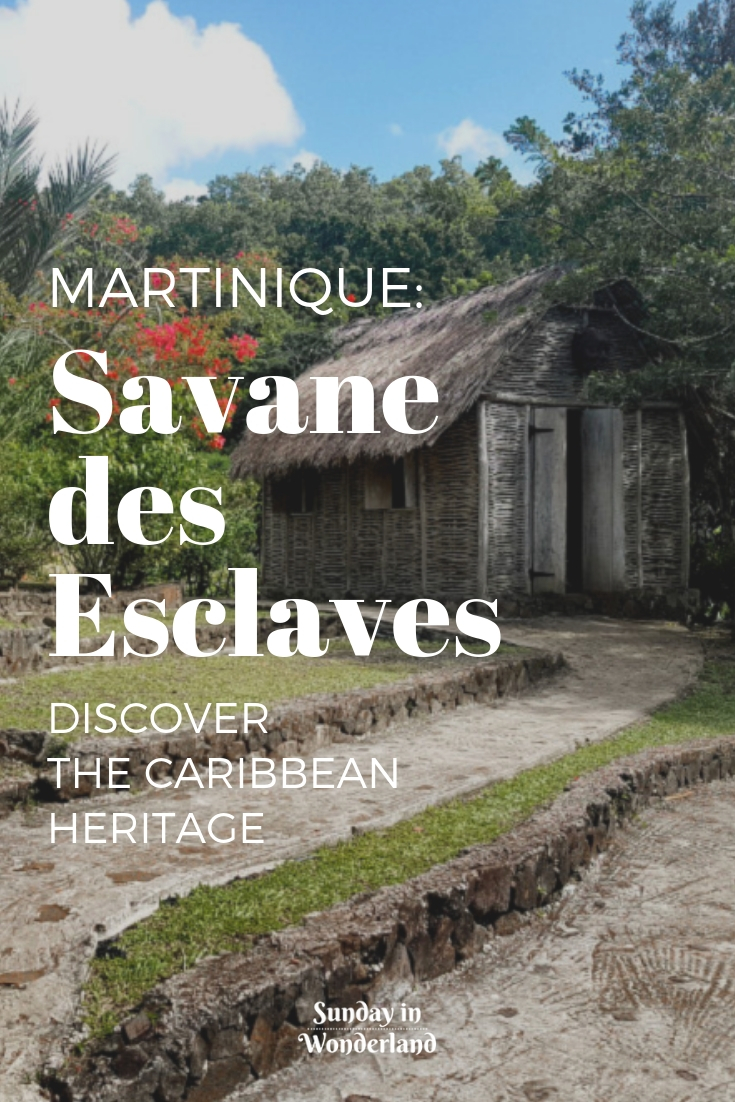
Dominika is a founder of Sunday In Wonderland and she recently switched her life to be local independent. She aims to travel the world and admire all of its wonders. She is much focused on sustainable life, self-development and making this world a better place.

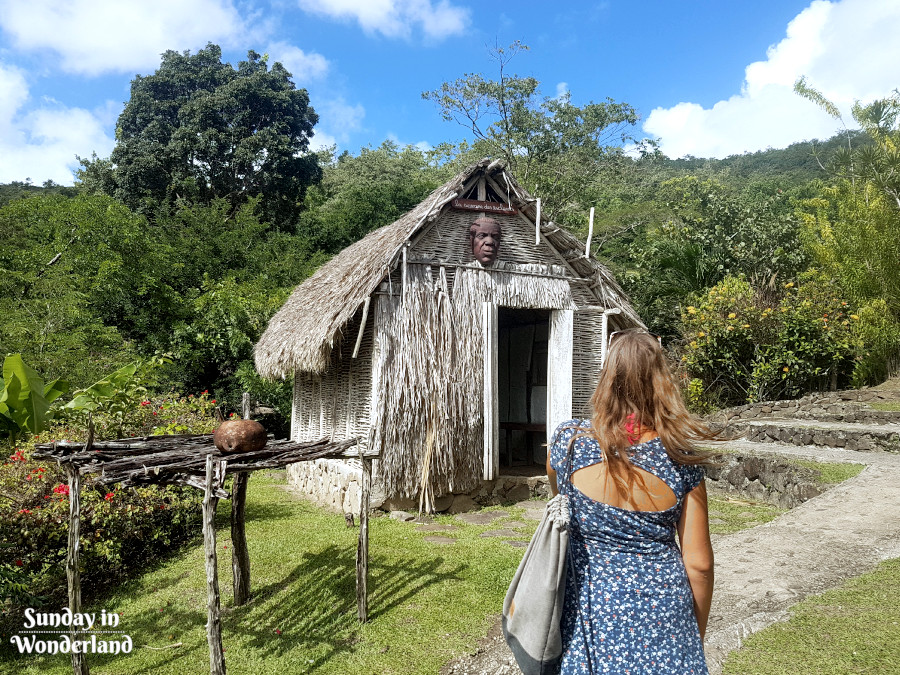




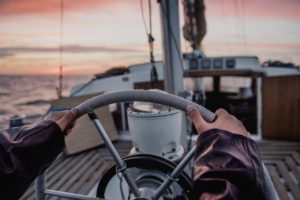
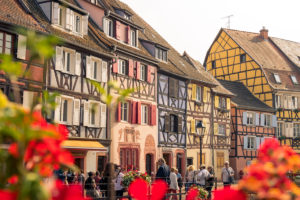
2 Responses
Dominika, why your text could not be translated in french language? I read a part and it’s very interesting, But i’m not a current reading of english language and it’s difficult for me to read all your article. Thank you for Martinica.
Hello! Thank you for nice word! 🙂
Unfortunately, for now I have no time to translate the blog post to French. Writing both in English and Polish takes a lot of time. But I hope to have some time to translate more in the future. Including the post about La Savane des Esclaves and other posts and guides about Martinique. 🙂
I hope you will enjoy the reading in English as much as you can! 🙂